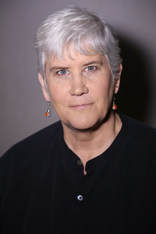|
Exercise Tip: Pick up a small item. Look at it. Observe the color, shape, and texture. Listen for the sound it makes when you tap on it. Notice the patterns. Does it have a taste or smell? What does it feel like? Describe in words aloud all the sensations you feel—the color as the light bounces on your eyes, the sound waves beating on your ear drums, the texture as the skin on your fingertips touch the object. A minute of paying specific attention can improve your sensations, mood, and relaxation.
When we remember an event, we remember certain types of sensations—the color of the car that hit us, the shape of the tree that fell in the wind storm, the feeling of salt water on our feet as we walked on the sandy beach, or the color of the shirt we were wearing when we got engaged. Medical research indicates that our perception of sensations in the moment as well as our memory of events can improve with practice. Here are two exercises that focus on color and shape recognition and improving memory. ... Request a Free PDF copy of the full article via email Burnham, Kimberly (2017 11 01). "Memory, Color, and the Visual Cortex of the Brain." ABI Magazine, Acquired Brain Injury Email Kimberly Burnham at NerveWhisperer@gmail.com Mention your top 8 health goals for 2018 for a free report on how you can feel better with easy self-care exercises. [Full Article] https://issuu.com/debbiest.jean/docs/arm_20fall_20issue_202017 OR ttps://www.academia.edu/35561260/Memory_Color_and_the_Visual_Cortex_of_the_Bra Connect with Kimberly Burnham on Social Media or Email for a Free Report on Brain Health Exercises, Mention your top 8 Health Goals for 2018.
1 Comment
Exercise Tip: Blink your eyes as you look around. Ask yourself questions about how many things, what shapes, or colors you see. For example, how many thing do you see that are red or round or chairs? This exercise can increase the speed with which you see and interpret the visual information you see.
A 2017 study in the Journal of Neurotrauma suggests that the peripheral vision reaction time indirectly measures white matter integrity in the posterior corpus callosum [connection between right and left hemispheres of the brain]. This is a brain region frequently damaged by mild traumatic brain injury (TBI). (Womack, K. B., C. Paliotta, et al. (2017). "Measurement of Peripheral Vision Reaction Time Identifies White Matter Disruption in Patients with Mild Traumatic Brain Injury." J Neurotrauma 34(8): 1539-1545.) Within seven days after the injury, patients received an MRI scan and a battery of neuropsychological tests. Nine uninjured control subjects received similar testing. The patients 18-50 years of age were included if they had a post-resuscitation Glasgow Coma Scale >13 and an injury mechanism compatible with mild traumatic brain injury. Healthy controls were either age- and gender-matched family members of the TBI patients or healthy volunteers. Researchers found that the patients with the worst white matter levels had the worst test scores and the patients with the most mild white matter deficits had the best test scores. "Patients could be stratified on the basis of crossed-uncrossed difference on the Stroop 1, Controlled Oral Word Association Test, and the obsessive-compulsive component of the Basic Symptom Inventory tests." Reverse engineering the Journal of Neurotrauma article indicates that exercises that increase peripheral vision and exercises that speed up reaction time may encourage white matter integrity and brain healing. ... Request a Free PDF copy of the full article via email Burnham, Kimberly (2017 08 01). "Speed Up Peripheral Vision, Build White Matter ." ABI Magazine, Acquired Brain Injury https://abimagazine.wordpress.com/. Email Kimberly Burnham at NerveWhisperer@gmail.com Mention your top 8 health goals for 2018 for a free report on how you can feel better with easy self-care exercises. [Full Article] https://www.academia.edu/34244903/Speed_Up_Peripheral_Vision_Build_White_Matter Connect with Kimberly Burnham on Social Media or Email for a Free Report on Brain Health Exercises, Mention your top 8 Health Goals for 2018. Exercise Tip: As you walk outside or in place count. Does your balance and walking improve? Or listen to music or poetry read outloud as you walk. What changes?
A recent study looked at the effects of rhythmic auditory stimulation on gait or walking behavior in 14 adolescents with acquired brain injury. Data collected included the dynamic motions of joints on three-dimensional planes during a gait cycle and the range of motion in each joint. Researchers noted, "Significant group differences were observed in cadence, walking velocity, and step time, indicating that there were greater improvements in those parameters in the rhythmic auditory stimulation group compared with the control group. Significant increases in hip and knee motions in the sagittal plane [hip flexion and extension] were also observed in the rhythmic auditory stimulation group." (Kim, S. J., Y. K. Shin, et al. (2016). "Changes in gait patterns induced by rhythmic auditory stimulation for adolescents with acquired brain injury." Ann N Y Acad Sci 1385(1): 53-62). The research indicates that attention to the rhythmical nature of our lives may help improve our ability to walk as well as the range of motion of joints. Many people with brain health issues find walking more successful when they count out loud or to themselves. This is a way to pay attention to the rhythm or cadence of walking. Think about your own walking does it improve if you sing a song or count or listen to music? Request a Free PDF copy of the full article via email Burnham, Kimberly (2017 01 01). "Balancing the Brain with Rhythmical Poetry and Movement." ABI Magazine, Acquired Brain Injury https://abimagazine.wordpress.com/ Email Kimberly Burnham at NerveWhisperer@gmail.com Mention your top 8 health goals for 2018 for a free report on how you can feel better with easy self-care exercises. [Full Article] http://www.academia.edu/31508510/Balancing_the_Brain...With_Rhythmical_Poetry_and_Movement_in_ABI_Recovery_Magazine_Winter_Issue_2017_ Connect with Kimberly Burnham on Social Media or Email for a Free report on Brain Health Exercises, Mention your top 8 Health Goals for 2018. |
Kimberly Burnham, PhD (Integrative Medicine)
860-221-8510 phone and what's app. Skype: Kimberly Burnham (Spokane, Washington) NerveWhisperer@gmail.com 4 Month Brain Health Coaching Package $600 includes: 8 one hour session (twice a month) plus ... Details Here
Regular Rate $120 per hour
Free 20-30 minute consultations available.. Call 860-221-8510 PST or email NerveWhisperer@gmail.com for an appointment this week.
Archives
January 2018
Categories
All
|




